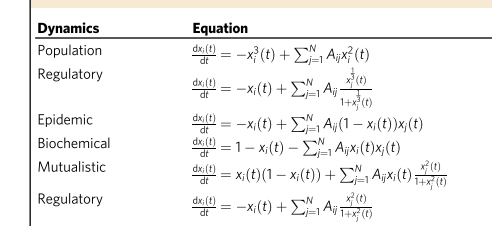cvanelteren
Computational scientist
University of Amsterdam
Casper van Elteren
Education
Skills
Achievements
Data visualization
Writing
Python
C++
Critical
Analytical
Creativity
Hobbies



Interests

Math
Understanding the process


Transient dynamics:
Closing the gap between consciousness and sub-consciousness
2012
Frequency sliding: novel non-linear approach to EEG analysis
Top-down modulation of the hollow mask illusion
2013
Intelligence as Dynamic Property in WAIS-III
The Hard Problem of Consciousness: A Metaphysical Remedy for Neurophenomenology
2016
2019
Why heuristics don't work


Mouse simulation in Morris water maze using temporal difference learning
Large-scale pattern recognition whole brain data of the Zebrafish
Detecting driver-nodes in complex systems using information theory

High performance general graph-based

Does structural connectedness translate to dynamical importance?


+

+


Which feature is considered important?
How to compare different models?
Harush et al. (2017)
Information theory and complex systems
Entropy
Mutual information
Shannon (1948)
Diminishing role of hubs

Quax et al. (2013)
Degree
Numerical
Analytical








Informational impact
Betweenness
Degree
Current flow
Eigenvector
Low intervention
High intervention


Text
Ideas


Given ergodic system S
Information will always decrease as function of time
Driver-node will share the most information with the system over time

Foster et al. (2000)
How do place cells encode location?
Computational gap bridged by temporal distance learning (Sutton, 1988)
Foster et al. (2000)


Fried at al. (2015)

Information impact captures driver-node change

Ahrens et al. (2013)
Opportunities
Threats
Weakness
Strengths





Information impact varies linearly with low causal impact
By cvanelteren
Criminal networks at UvA